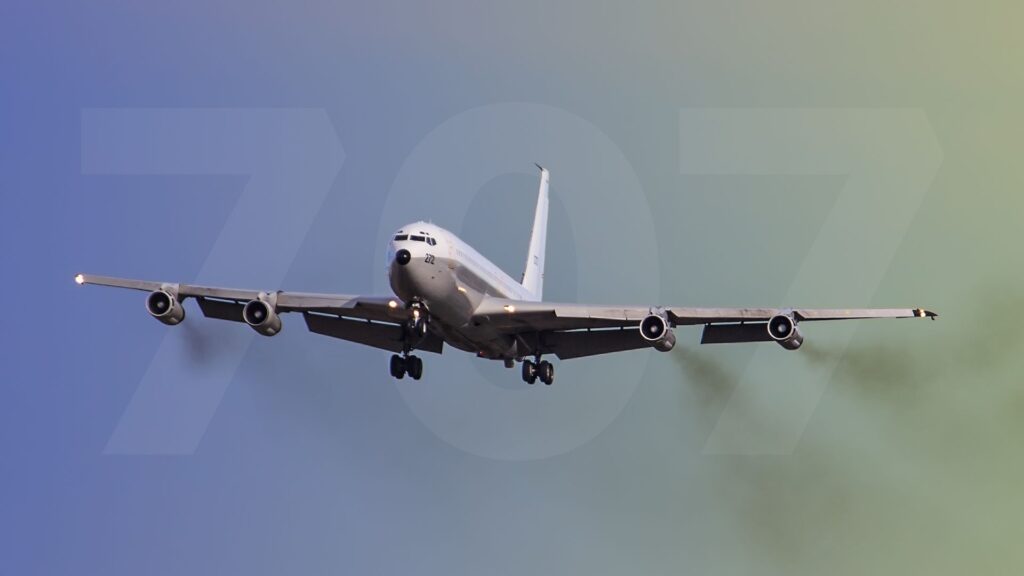
Boeing, a leader in the global commercial aviation industry, made a significant mark with its first commercial aircraft, the Boeing 707, introduced in 1958. This narrowbody quadjet was revolutionary, paving the way for modern air travel. Since its founding in July 1916, Boeing has expanded to employ nearly 50,000 individuals worldwide, with major manufacturing facilities in Everett, Washington, and Charleston, South Carolina. In 2024, the company reported nearly $33 billion in revenue, driven largely by its dominance in commercial aviation.
The Boeing 707, which first flew on December 20, 1957, was a game changer for the industry. It featured a unique design with four jet engines, a decision influenced by the technological limitations of the time. In the early 1950s, jet engines were not capable of producing sufficient thrust for large, long-range aircraft on their own. By utilizing four engines, Boeing ensured that the 707 could safely operate on transoceanic routes, a crucial factor given the aviation regulations of the era.
Development and Features of the Boeing 707
The origins of the Boeing 707 can be traced back to the company’s success during World War II, where it produced iconic military aircraft such as the B-17 Flying Fortress. After the war, Boeing faced stiff competition from Douglas Aircraft and Lockheed in the commercial sector. To innovate, the company developed the Boeing 367-80, a prototype that showcased the potential of jet-powered commercial flight. This aircraft laid the groundwork for the Boeing 707, which featured a longer fuselage, greater range, and the ability to accommodate more passengers.
The first production model of the 707 received its type certification from the Federal Aviation Administration (FAA) in September 1958. Pan American World Airways, commonly known as Pan Am, became the launch customer. The airline introduced the aircraft into commercial service on October 26, 1958, operating flight 114 from Idlewild Airport (now John F. Kennedy International Airport) in New York City to Orly Airport in Paris. This journey, which included a refueling stop in Gander, Newfoundland, took just under nine hours—significantly faster than the 14-hour service provided by piston-engine aircraft at the time.
The Boeing 707 was characterized by its sleek design, with a wingspan of 129 feet eight inches and a maximum takeoff weight of 333,600 pounds. The aircraft was powered by four Pratt & Whitney JT3C turbojet engines, which were later upgraded to more efficient JT3D engines, each capable of providing nearly 20,000 pounds of thrust.
Legacy and Operators of the Boeing 707
Throughout its operational life, the Boeing 707 became a staple for airlines around the globe. Pan Am emerged as the largest operator, with over 130 units in service. Other significant operators included American Airlines with more than 120 aircraft and Trans World Airlines (TWA) with over 100.
The 707 was not only popular in the United States; it found favor among international carriers such as British Overseas Airways Corporation (BOAC), Air France, and Qantas. For Qantas, Boeing developed the 707-138 and 707-138B variants, tailored for long-range operations.
While commercial airlines have retired their fleets of the Boeing 707, the airframe’s durability has led to its continued use in military applications. Variants such as the E-3 Sentry AWACS and E-6 Mercury are still in active service with the United States military and other air forces around the world. Some private operators continue to utilize older models; for instance, the Congo Presidential Flight still operates a 66-year-old Boeing 707.
The Boeing 707’s influence on commercial aviation cannot be overstated. It introduced jet-powered transport to the masses and set the standard for subsequent aircraft designs. With the ability to fly at higher altitudes and faster speeds, the 707 transformed long-distance air travel. Its legacy endures, not only in the skies but also in the hearts of aviation enthusiasts and historians alike, marking a pivotal chapter in the story of flight.






